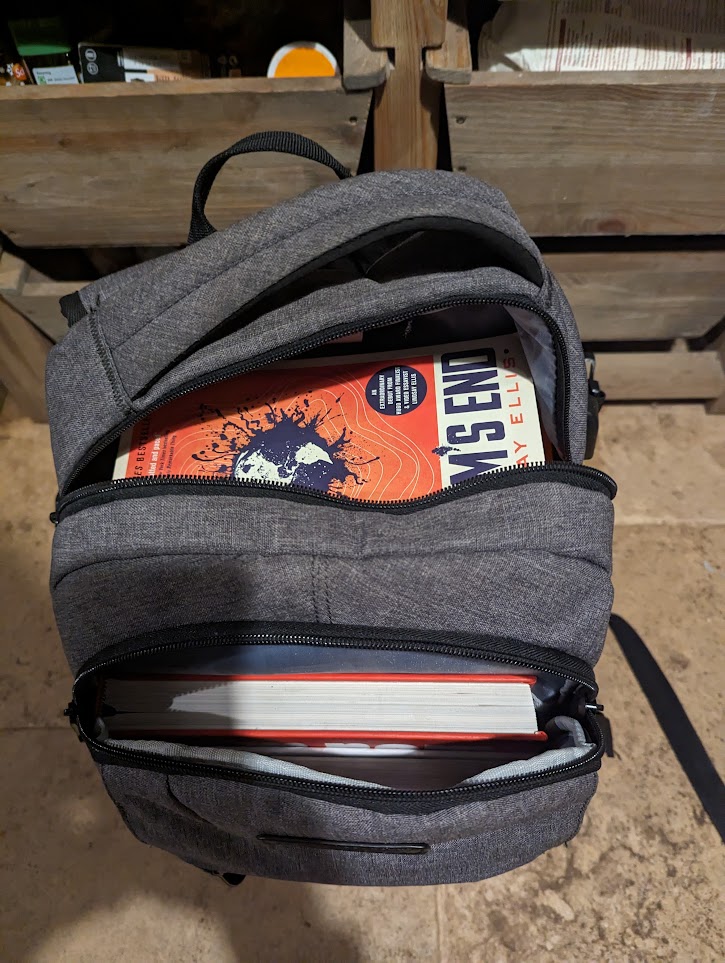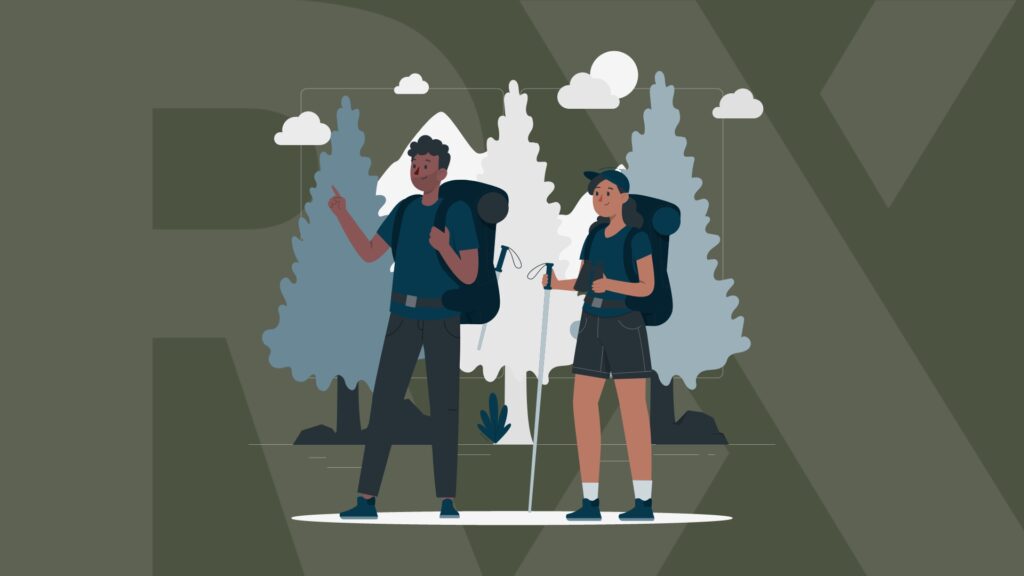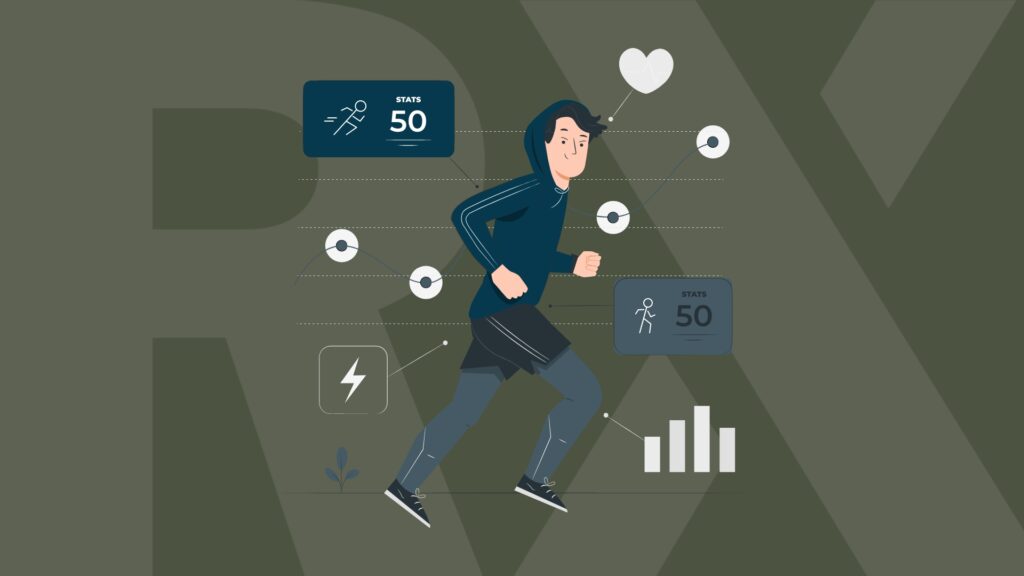Rucking – How to get started for Free
Rucking, which is just walking with a weighted backpack, is gathering some interest as a form of exercise, and rightly so. Rucking is a simple, accessible exercise that can be done from your doorstep and has practically no barrier to entry – if you can walk, you can ruck.
Rucking vs
We all know exercise’s usual suspects of:
- Walking
- Running
- Cycling
- Weight Lifting
- The Gym
- HIIT (Crossfit, Spinning etc)
- Classes
Walking is an obvious one and we should all be doing more of that, but, for folks in their 40s, you also need to crank the difficulty up a bit.
At a higher intensity than walking, running is the most accessible as you don’t need much equipment and can run right out your front door. However, for many of us, in our 40s and beyond, running is neither enjoyable nor practical. I have never really enjoyed running but have slogged on over the years, but now, at 47, my knees want to run even less than I do.
Then there is strength training and classes and all of the other forms of exercise which again have their benefits but for there is more of a requirement for time, transport and equipment.
The solution to all of these problems is rucking, which integrates cardiovascular exercise, strength training, and high-intensity work into one simple package. Better yet, rucking is low-impact, can be done with friends and gets you outdoors so gives you a boost to your mental and physical health.
If you can walk, you can ruck
Another benefit of rucking is that there is practically no barrier to entry – you need a bag and a bit of weight. Depending on your size and fitness level, anything from around 5kg to 10kg is a good starting point.
Rucking burns calories and fat whilst building muscle. This makes it a time-efficient way to improve your fitness. You can ruck on your lunch break, when you walk the dog, with a friend, or wherever it fits into your schedule.
Rucking – the tools of the trade
Getting started is easy; you just need a backpack and a few items to add some weight (our FREE beginner program can help).
The essentials are:
Backpack (or rucksack)
The first thing you need is a backpack. Any old bag will do, to begin with. You can use your kid’s school backpack, a hiking pack, or anything similar. Don’t worry about this too much as with a beginner’s weight, you don’t need anything special!
You may also want to use a few towels to pad the backpack for comfort.
A backpack with two towels will likely be around 2kg which is your baseline.
Weight & Measurement
Next, you need some weight and a way to measure it.
You may have old hand weights, weight plates, kettlebells or other exercise equipment kicking around – if so, great. You can certainly use those. Just be mindful to wrap them up in a towel so they are comfortable.
If not, don’t worry; your home is full of items you can use to get to a beginner’s weight, so you can start rucking today.
Household scales for cooking can weigh small items, and a typical home scale for weighing more oversized items (i.e. people) can be used to weigh your bag once loaded.
Types of weight
The following are the most likely heavy items you have in your home and can be used to start rucking.
1. Books
Books are a simple way to add weight to your backpack. Many of us have rucked for years when walking to and from school with a bag full of textbooks and did not even realise.

As a general rule of thumb, books weigh:
- 300g – Small novel
- 400g – Medium novel
- 500g – Larger novel or book
- 1kg – Softback cookbook
- 1.5kg – Hardback cookbook
If you have five or six hardback cookbooks kicking about, you can quickly get close to 9kg (factor in your bag, and 10kg is in grasp).
Magazines can also be used, and if you have a stack of A4 magazines, pop them on your household scales to figure out what you have and load up that backpack.
Mix and match cookbooks, magazines and novels to get your desired size, shape and weight.
2. Bottles of Water
A 1-litre bottle of water weighs 1kg. You can pick up 2-litre water bottles or pop from any shop and just fill these up from a tap. Getting 5 x 2-litre bottles of water in any reasonably sized backpack is easy, getting you a 10kg.
1 Litre = 1kg – this is a simple way to increase your pack’s weight gradually.
3. Household items
Whilst books, magazines and bottles of water are likely the most straightforward approach, your home is full of heavy items you can use to load up a backpack.
All of these everyday items can be used:
- 0.5kg – can of beans
- 0.5kg – bag of sugar
- 0.5kg – towel
- 1.0kg – pair of shoes
- Tools
- Bags or rice
- Bags of flour
- Cans of beer – ruck them back to earn them!
With a simple household scale, you can get creative and use almost anything in your cupboard to load up your pack.
I loaded up my work backpack this morning with a bunch of cookbooks and a few novels and got to 12kg easy.

Beginners Tips
Read our getting started guide and download our free beginner’s guide for a comprehensive overview of how to start rucking and a 12-week program.
Obvious tips beyond that:
- Start light
- Use a towel to wrap up the weight
- Organise to be comfortable
- Use chest and waist straps if you have them
This will get you started and whilst, eventually, you will want to progress to the proper kit, you can do a lot to improve your mental and physical health without spending a penny!
If you have any questions or comments, please contact us on our socials or drop us a line below.
No excuses; stop reading and go rucking!


